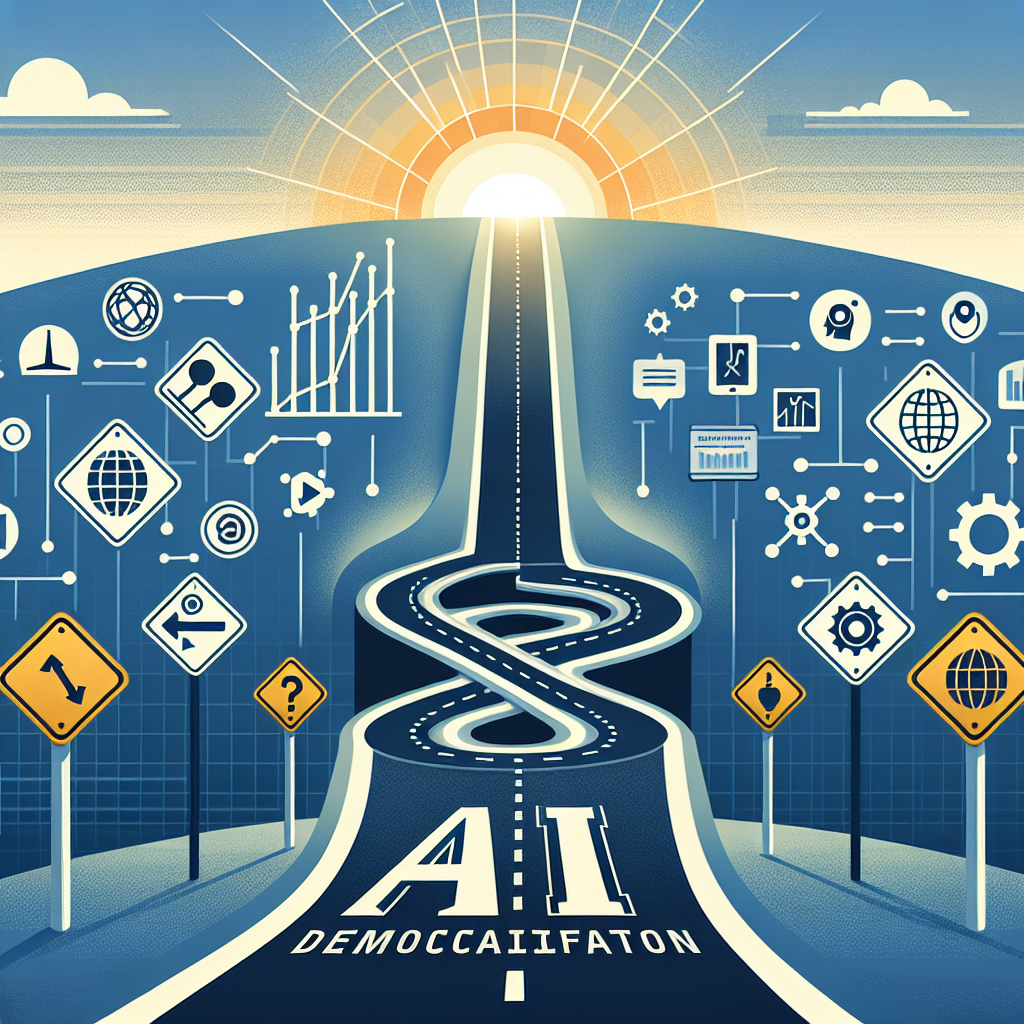The Road to AI Democratization: Progress and Pitfalls
Artificial Intelligence (AI) has become one of the most transformative technologies of the 21st century. From self-driving cars to virtual assistants, AI has the potential to revolutionize industries and improve the quality of life for people around the world. However, despite its immense promise, AI has been largely inaccessible to the general public due to high costs, technical complexity, and limited expertise.
The concept of AI democratization seeks to address these barriers by making AI more accessible, affordable, and easy to use for individuals and organizations of all sizes. In this article, we will explore the progress that has been made towards AI democratization, as well as the pitfalls that must be overcome to achieve this goal.
Progress Towards AI Democratization
In recent years, there have been significant advancements in AI technology that have made it more accessible to a wider range of users. One of the key drivers of this progress has been the development of open-source AI frameworks and tools, such as TensorFlow, PyTorch, and scikit-learn. These tools allow developers to build and deploy AI models without the need for expensive proprietary software or specialized hardware.
Another important development in the democratization of AI has been the rise of cloud-based AI services, such as Amazon Web Services (AWS) and Google Cloud Platform. These services provide users with access to powerful AI tools and resources on a pay-as-you-go basis, making it easier and more affordable for individuals and organizations to leverage AI technology.
In addition to open-source frameworks and cloud services, there has been a growing emphasis on AI education and training programs aimed at non-experts. Companies like Coursera, Udemy, and edX offer online courses in AI and machine learning that are accessible to anyone with an internet connection. These courses provide individuals with the knowledge and skills they need to build and deploy AI models in their own projects.
Pitfalls to Overcome
While significant progress has been made towards AI democratization, there are still several challenges that must be addressed to ensure that AI is truly accessible to all. One of the biggest challenges is the lack of diversity in the AI workforce. The field of AI is still dominated by white males, which can lead to biased algorithms and products that do not adequately serve the needs of diverse populations.
Another challenge is the ethical implications of AI technology, such as privacy concerns, algorithmic bias, and job displacement. As AI becomes more widespread, it is important to ensure that these technologies are used in a responsible and ethical manner. This will require collaboration between governments, industry, and academia to establish guidelines and regulations for the development and deployment of AI systems.
Finally, there is the issue of digital divide, where individuals and communities with limited access to technology are left behind in the AI revolution. To address this challenge, efforts must be made to bridge the gap between those who have access to AI technology and those who do not. This may involve initiatives to provide access to AI tools and resources in underserved communities, as well as programs to train and educate individuals in AI skills.
FAQs
Q: What is AI democratization?
A: AI democratization refers to the efforts to make AI more accessible, affordable, and easy to use for individuals and organizations of all sizes. This includes the development of open-source AI frameworks and tools, cloud-based AI services, and AI education and training programs.
Q: Why is AI democratization important?
A: AI democratization is important because it can help unlock the full potential of AI technology and drive innovation across industries. By making AI more accessible, a wider range of users can leverage this technology to solve complex problems and improve the quality of life for people around the world.
Q: What are some examples of AI democratization in action?
A: Some examples of AI democratization in action include the development of open-source AI frameworks like TensorFlow and PyTorch, the rise of cloud-based AI services like AWS and Google Cloud Platform, and the availability of online AI courses on platforms like Coursera and Udemy.
Q: What are some challenges to AI democratization?
A: Some challenges to AI democratization include the lack of diversity in the AI workforce, ethical implications of AI technology, such as privacy concerns and algorithmic bias, and the digital divide between those who have access to AI technology and those who do not.
In conclusion, the road to AI democratization is marked by both progress and pitfalls. While significant advancements have been made towards making AI more accessible and affordable, there are still challenges that must be overcome to ensure that AI technology is used in a responsible and ethical manner. By addressing these challenges and working towards a more inclusive and diverse AI ecosystem, we can unlock the full potential of AI technology and drive innovation for years to come.

